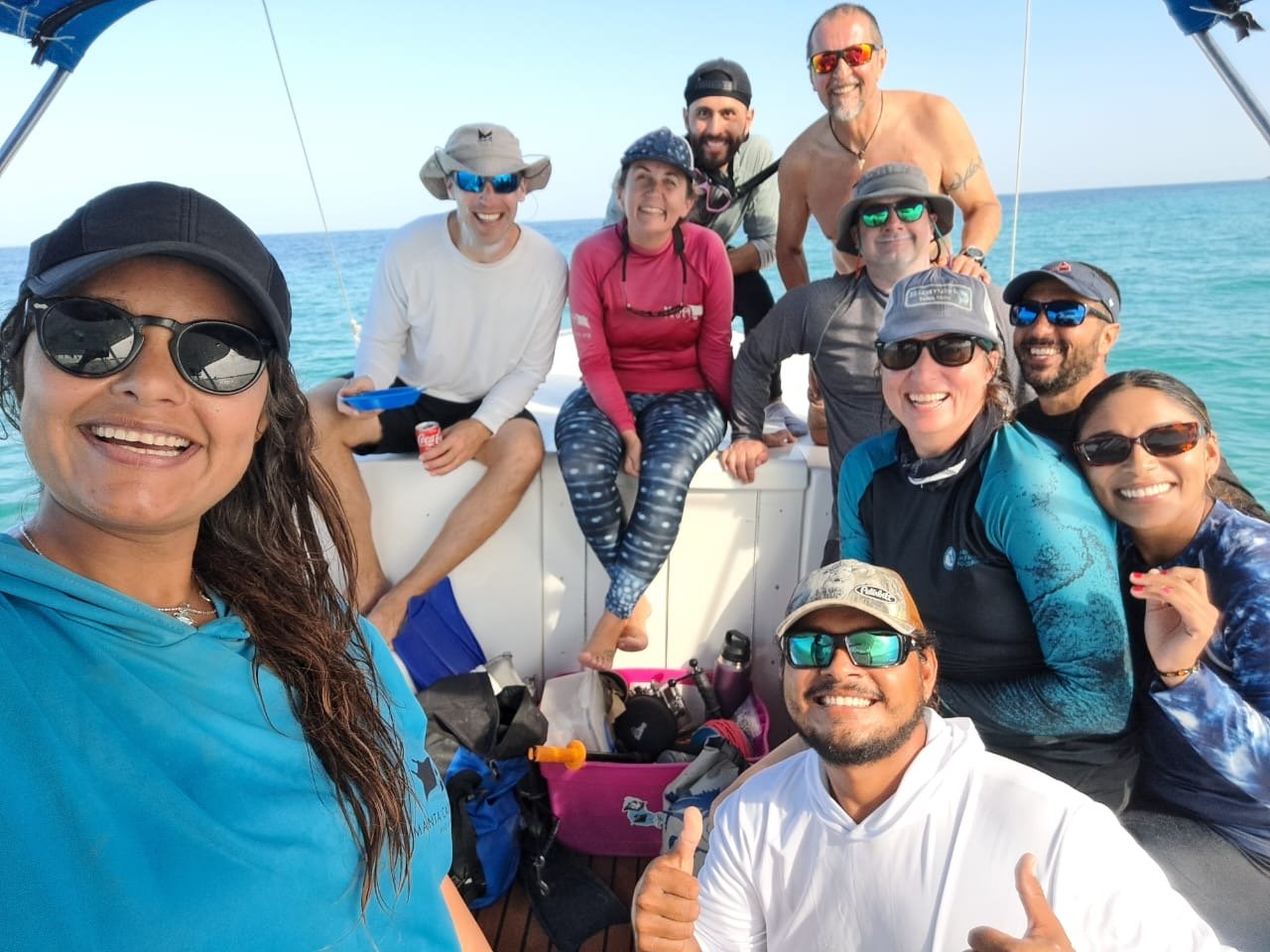Tracking Atlantic Manta Rays Through International Research Efforts
September 2024
Last year, the Manta Trust helped establish an Atlantic Manta and Devil Ray Research Coalition, bringing together researchers from 15 organisations. The organisations have been learning about each other's work, and this past month, a few members came together to do some in-water research!
Atlantic manta and devil ray coalition collaborating organisations
Manta Mexico Caribe, based in Isla Mujeres, has studied manta rays in marine protected areas (MPAs) in the northern region of the Yucatan Peninsula for over ten years. While many tourists visit Isla Mujeres to swim with whale sharks, manta rays can only be visited by research vessels, as they are fully protected species under the MPA’s management programme.
Atlantic manta ray © Guy Stevens
To help solve the mystery of where the mantas travel when they leave the MPAs in Mexico, and whether they cross international waters, the Manta Trust, Manta Mexico Caribe, and the National Oceanic and Atmospheric Administration (NOAA) Fisheries developed a tagging programme. It is possible that the mantas travel to nursery habitats at Flower Garden Banks National Marine Sanctuary off Texas, along the southeast Florida coastline, or potentially to the waters of Central America or other areas in the Caribbean.
The research team © Karen Fuentes
In August, Manta Mexico Caribe (Manta Trust Affiliate) hosted researchers from NOAA Fisheries, the Florida Manta Project (Marine Megafauna Foundation), Océanos Vivientes (another non-profit of the Atlantic Coalition), and myself from the Caribbean Islands Manta Conservation Programme (Manta Trust Affiliate) on the island of Isla Mujeres to deploy satellite tags. This research is in its second year of collaboration, and the trip was an excellent opportunity for this diverse group of researchers to come together, share knowledge, discuss conservation concerns, and deploy tags to learn more about the movements of giant manta rays.
Tagging Updates Video © Valentina Cucchiara
Most of my work in Bonaire is education-based, so joining this trip allowed me to see the tagging activities in person and how biopsies were collected. It also gave me my first opportunity to see an adult Caribbean manta ray, witness a manta ray breach, and meet the Mexican Caribbean team. Over four days, we encountered twelve individual manta rays, and all the tags for the study with NOAA Fisheries were successfully deployed. Among the most memorable moments of the trip were the hours I spent swimming with one female manta ray, “Amiga”, on both our first and third days of the expedition. The MPA she swam in is an important habitat for many marine species, including whale sharks. The manta showed no apparent concern at being tagged and biopsied; she kept cruising around to check out the researchers watching her behaviour.
Atlantic manta ray © Guy Stevens
Karen and Ixchel from the Manta Mexico Caribbean Project also flew their new drone with guidance from Jessica of the Florida Manta Project. Jessica, who often conducts aerial surveys, taught the team how to fly the drone in challenging, windy conditions from the boat. This hands-on experience provided invaluable knowledge to the team that would have been much more difficult to learn without her expertise. Many whale sharks were spotted from the drone as well as a manta barrel roll feeding. Because individual mantas have unique spot patterns on their ventral surface, the team was able to identify this manta from the drone image. They were also able to tag the manta after the feeding.
The research team © Karen Fuentes
Manta Mexico Caribe provides fantastic volunteer opportunities for students. After visiting Isla Mujeres, I can't think of a better place for a month of research, education, and volunteer work. The boat captains, research crew, and project leader form an incredible team, and I am fortunate to have joined them for a week in Mexico. We are all eager to learn about the routes taken by the tagged manta rays and hope that the data will aid in conservation efforts in the future.
NICOLE PELLETIER
Caribbean Islands Manta Conservation Program






